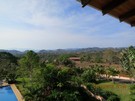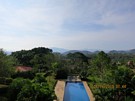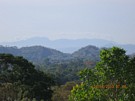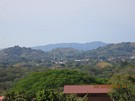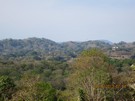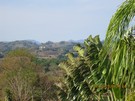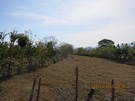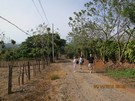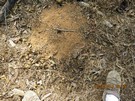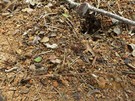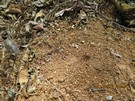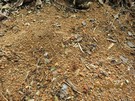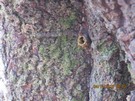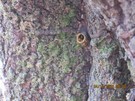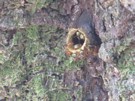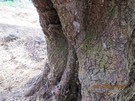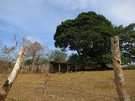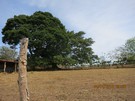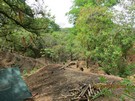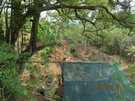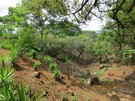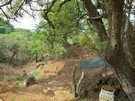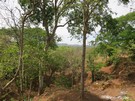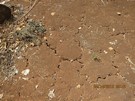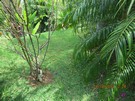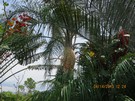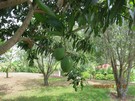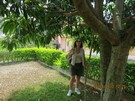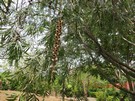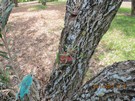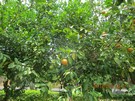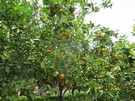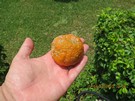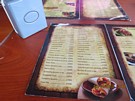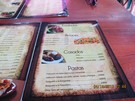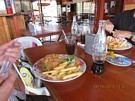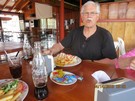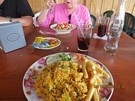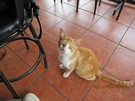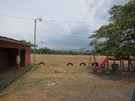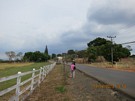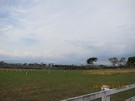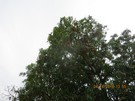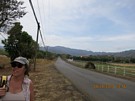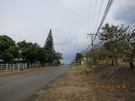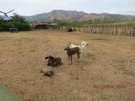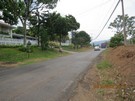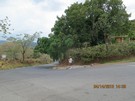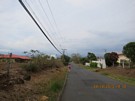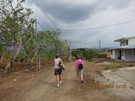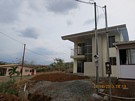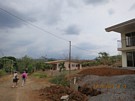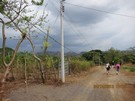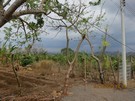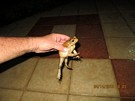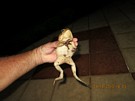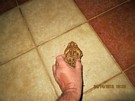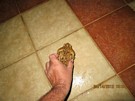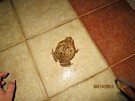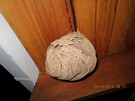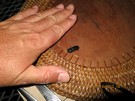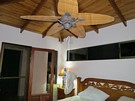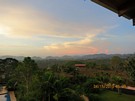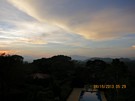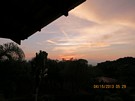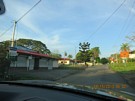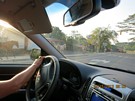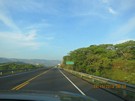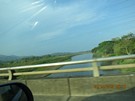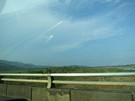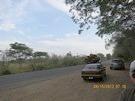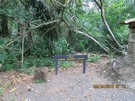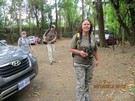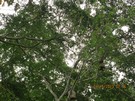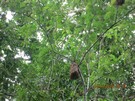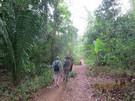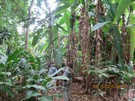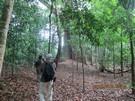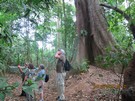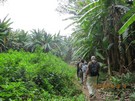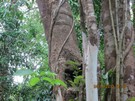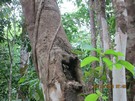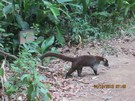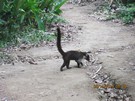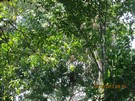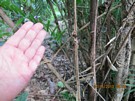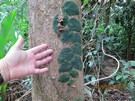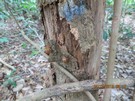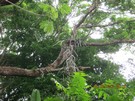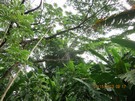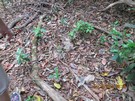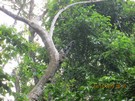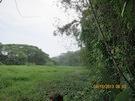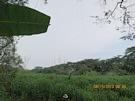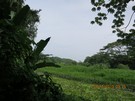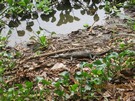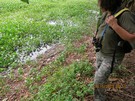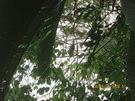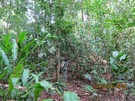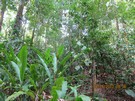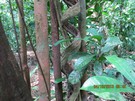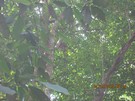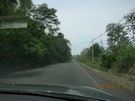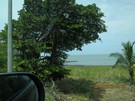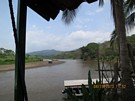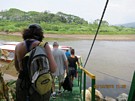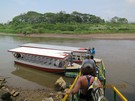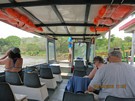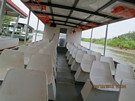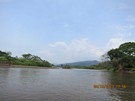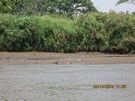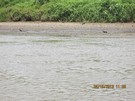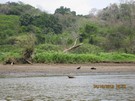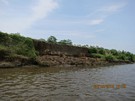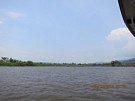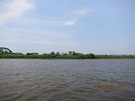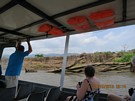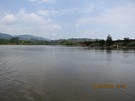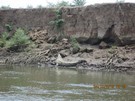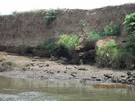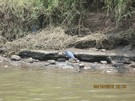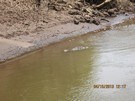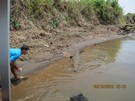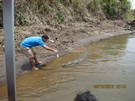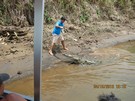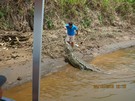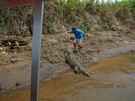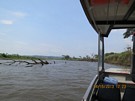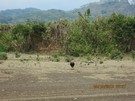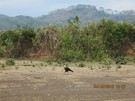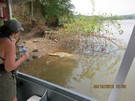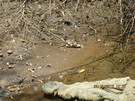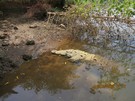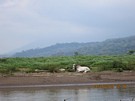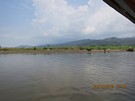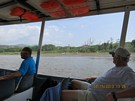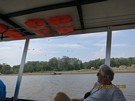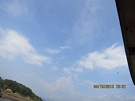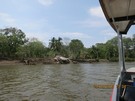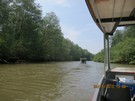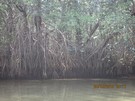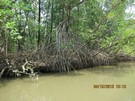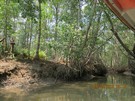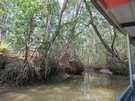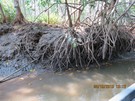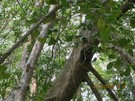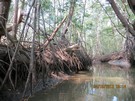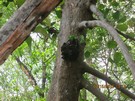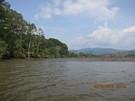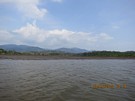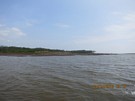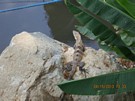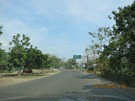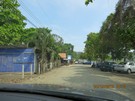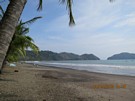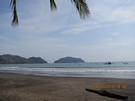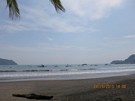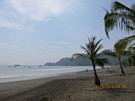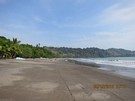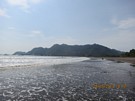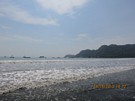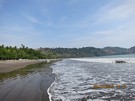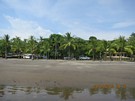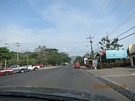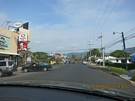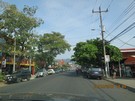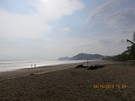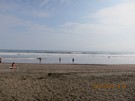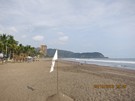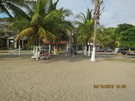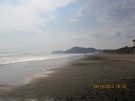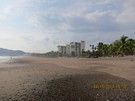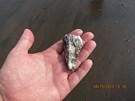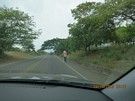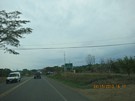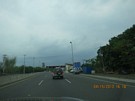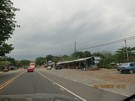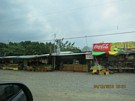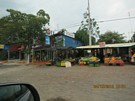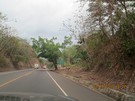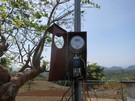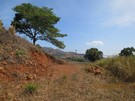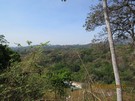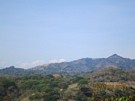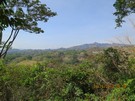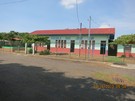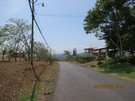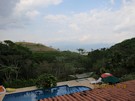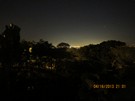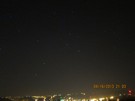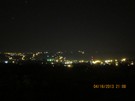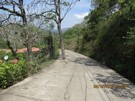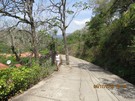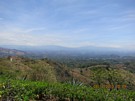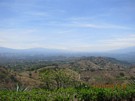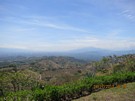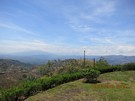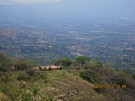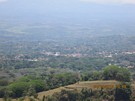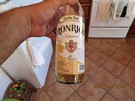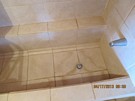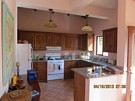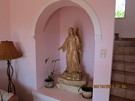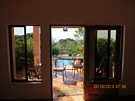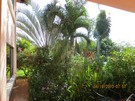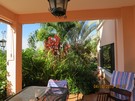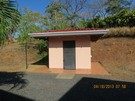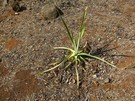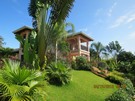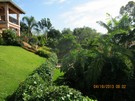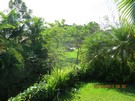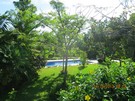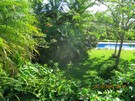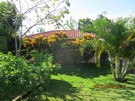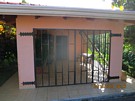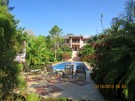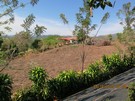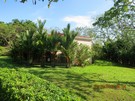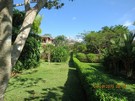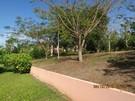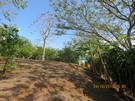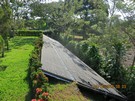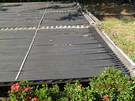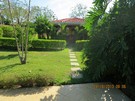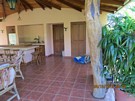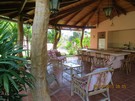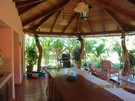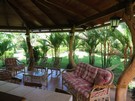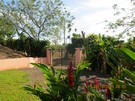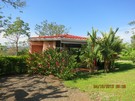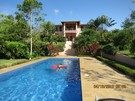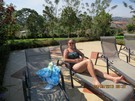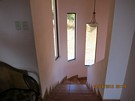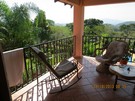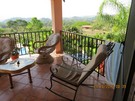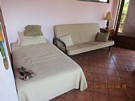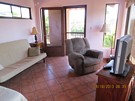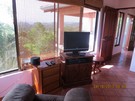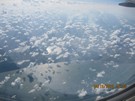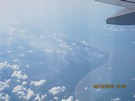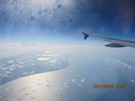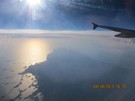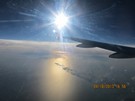Sunday - APR 14 2013
Another beautiful day
Some close shots of Atenas from the upper porch of the house. The left tower is right by the supermarket that we go to.
The palm trees behind the right tower is the park and the church is right behind them.
Looks like a celltower and or a internet antenna and some expat areas on the hills.
Time for another walk down into the fields behind the house. This time Walt and Judy are going too.
Messing with the leaf cutter ants. Atta cephalotes is a leaf-cutting, fungus-growing ant, with one of the most fascinating and complex social systems known to science.
Got them disturbed enough that the large soldier ants came out.
Mary discovered a very busy wasp nest in a tree. They were very small and extremely busy and hard to photograph. I got close a couple of times and they did not seem to react to my hand a foot or two away.
Just a small hole in a tree.
Interesting farming area again behind the house. Very dry.
So dry the ground is cracking
Back looking at various plants around the property
We walked up to a restaurant called Bar El Guapinol. It was very good. (located at: 10.0001N 84.3925W)
The menu
Coke in GLASS ! And french fries ? Strange...
Kitty who wants some chicken handouts... Not a problem
The Plaza de deportes de San Jose Sur near the resturant
Walking back home with lots of motorcycles going by.
Clouds up on Poas Volcano (left) & Barva Volcano on the horizon.
Mangos
The roads are much better than we figured.
The local cow gang
Mary collecting ditch fruit. Not someting that you do in Pennsylvania.
Road views. New house on our dirt road. Looks like rain but it never rained at the house today.
Giant Toad or Cane Toad (Bufo marinus) Spanish Name: Sapo grande
This nocturnal toad is difficult to confuse with other species mostly because of its massive size. Another distinct trait is the pair of large, triangularly shaped poison glands (paratoid glands) on the sides of the neck.
Adults are much more toxic, and although they are still sometimes eaten by crocodiles, other reptiles, birds, or mammals, the glands in an adult contain enough poison to kill large animals. Adults can also eject their poison at an attacker.
One of the toxins in the Cane Toad can cause hallucinogenic responses, making it of interest both to ancient indigenous cultures in Central America and to contemporary scientists. Using the toad by any method is not the best vehicle for hallucinogenic experiences the human reaction is unpredictable and this toad is potentially lethal.
Well, as most of you know I have an interesting way of exposing myself to various toxins. This toad would jump in the pool each night and I would toss him out thinking he was trapped. Well he released his poison and it made part of my left hand fall asleep overnight. No harm done.. And I can add the toad to the list of no-touch.
Another hornets nest. Very small and dead !
Beatle
The fan in the upstairs bedroom. A story here...
We did not have A/C in the upstairs room and generally we did not need it. (the downstairs bedroom had it but the only way you could turn it on was with a remote control and it was corroded by bad batteries) So, we needed the fan... BUT.. The fan was extremely out of balance. Since I is an engineer I figured this would be easy... We tightened the blades.. FAIL... We tried to balance the blades... FAIL... We tightened everything else FAIL... I could see where previous renters actually put butter on the shaft to try to stop the clicking sounds it makes which are so loud that it could be heard probably 100+ feet from the house. Nothing worked. Since we were a pain over the debris in the pool I was not about to complain about the fan so I figured a counterweight system would fix it. And it did. The correct weight was my hiking shoe with a bottle of water in it. No more problems.
Always take some extra shoe laces with you. You never know...
Monday - APR 15 2013
So, today was our trip to the Pacific. Up early... Some thunderstorms along the coast to the southwest at 5:30 am
Looking east at the mountains south of San Jose at sunrise
Looking at the Volcanos on the horizon at sunrise
Horses along the road south of Atenas
On the toll road (Costa Rica CR-27) that runs from San Jose to the coast. The quality is excellent. I don't see any issues in driving this, even at night.
Only 20 km to Orotina and 45 km to Caldera which is on the coast south of Puntarenas.
This surprised me as I figured Atenas was further to the Ocean as 45 km is 27 miles.
Some bad photos of the CR-34 bridge over the Rio Grand de Tarcoles. Way less than an hour from the house to the costal area. Many people watch crocodiles from this bridge.
The Tarcoles River, also called the Grande de Tarcoles River or the Rio Grande de Tarcoles, in Costa Rica originates on the southern slopes of the Cordillera Central volcanic range and flows in a south-westerly direction to the Gulf of Nicoya. The river is 111 km long and its watershed covers an area of 2,121 sq. km, which encompasses around 50% of the country's population.
The river is the most contaminated river in Costa Rica, carrying much of the sewage from the central towns and cities. The river's watershed drains approximately 67% of Costa Rica's untreated organic and industrial waste and is considered the most contaminated river basin in the country. It was also affected by a leak of 400 thousand litres of diesel fuel by the state-owned Costa Rican Petroleum Refinery in 2000 which further damaged the ecology of the river and its immediate surroundings.
The river's upper reaches form the northern border of the Carara Biological Reserve. It is a habitat for American Crocodiles, while the marshes located at the river's mouth have many waterfowl and wading birds. Among the many herons and egrets are the Boatbill and Bare-throated Tiger Heron, and other birds found here include Double-striped Thick-knee, Mangrove Warbler and American Pygmy Kingfisher. Reptiles, such as the American Crocodile, Cayman, Common Basilisk and large iguanas, are also easily seen.
Carara National Park
Carara National Park is a National Park in the Central Pacific Conservation Area located near the Pacific coast of Costa Rica. It was established on April 27, 1978 as a biological reserve, but its growing popularity after 1990 forced the government to upgrade its category to national park due to the massive numbers of tourists who visited it. This change took place in November 1998
Carara National Park contains more primary rainforest than the relatively close Manuel Antonio National Park. As such, it is wetter than the more popular Manuel Antonio National Park, and has denser tree growth and more mosquitoes and other insects. This environment makes Carara a haven for many bird species, being the park a popular birdwatching destination. In addition to Scarlet Macaws, birds found in Carara include orange-chinned parakeets and other parrots, hummingbirds, woodpeckers, motmots, jacamars, manakins, antbirds, and several species of trogon, including the black-throated trogon. Several species of water birds inhabit the park as well. These include the anhinga, several species of heron, egret andkingfishers. Among the reptiles present in the park are the American crocodile and several snake and lizard species. Green and black poison arrow frogs are among the amphibians present. Mammals include white-tailed deer, red brockets, collared peccaries, agouti, kinkajous, white-faced capuchin monkeys, mantled howler monkeys, Hoffmann's two-toed sloths and brown-throated three-toed sloths. However, mammals can be difficult to see due to the dense tree cover.
We waited at the Ingreso principal al Parque Nacional Carara Natonal Park main entrance for the guides. As we waited, a number of logging trucks went by.
We then went up the road a bit to parking at a trail head. This seemed to be a safe place to park but our tour guide Marian caught up to us later in the hike when enough other people showed up in the lot.
The tour we went on was Victor Tours and Antonio was the guide (We want to do this again in December)
Hornet nests. Looks like P. dimidiata
The 4 of us with the guide. The temps were in the mid 80's at 7:30 am with 100% humidity. The bugs were not that bad considering.
The size of the trees in some areas were impressive.
Jesus Christ lizzard in hole in the tree.
It is also known as the Jesus Lizard, Jesus Christ Lizard, or Lagarto de Jesus Cristo for its ability to run on the surface of water.
Coati along the trail
